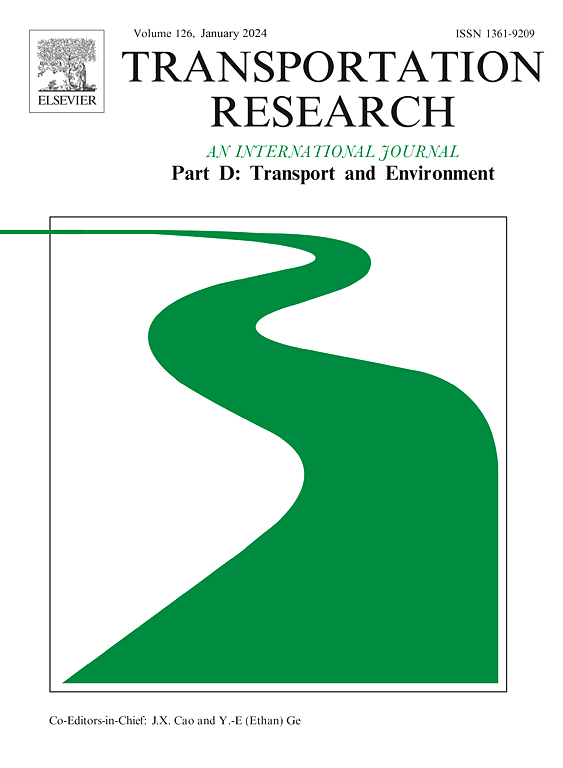用邻里劣势解释共享单车使用差异:一个分解分析
IF 7.7
1区 工程技术
Q1 ENVIRONMENTAL STUDIES
Transportation Research Part D-transport and Environment
Pub Date : 2025-05-14
DOI:10.1016/j.trd.2025.104803
引用次数: 0
摘要
尽管越来越多的证据表明,共享单车的使用存在空间不平等,但影响因素仍未得到充分探讨。本研究调查了芝加哥弱势社区和非弱势社区之间共享单车出行密度的差异,并使用Gelbach分解方法确定潜在的驱动因素。调查结果显示,在贫困社区,传统自行车和电动自行车出行的频率都较低。Gelbach的分解表明,无论哪种类型的自行车,自行车基础设施都是这种空间不平等的最关键驱动因素,建筑环境和社会经济/人口因素也有贡献。具体来说,除了共享单车站点的密集,弱势社区缺乏公路自行车道,导致了两种自行车类型的不公平分布。然而,在弱势社区,较低的公共自行车架密度和较高的暴力犯罪率只与较少的电动自行车出行有关,而缺乏火车站和有限的蜂窝数据计划则是导致传统自行车出行不平等的唯一原因。本文章由计算机程序翻译,如有差异,请以英文原文为准。
Explaining disparities in bike-share usage by neighborhood disadvantage: A decomposition analysis
Despite growing evidence of spatial inequities in bike-share usage, contributing factors remain underexplored. This study investigated differences in bike-share trip density between disadvantaged and non-disadvantaged neighborhoods in Chicago and used the Gelbach decomposition method to identify underlying drivers. Findings revealed that both traditional bike and electric bike trips occurred less frequently in disadvantaged neighborhoods. Gelbach’s decomposition indicated that, regardless of bike type, bike infrastructure was the most critical driver of this spatial inequity, with the built environment and socioeconomic/demographic factors also contributing. Specifically, alongside bike-share station dock density, the lack of on-road bicycle lanes in disadvantaged neighborhoods contributed to the inequitable distribution of both bike types. However, lower public bike rack density and higher violent crime rates in disadvantaged neighborhoods were exclusively linked to fewer e-bike trips, whereas the lack of rail stations and limited access to cellular data plans uniquely drove inequity in traditional bike trips.
求助全文
通过发布文献求助,成功后即可免费获取论文全文。
去求助
来源期刊
CiteScore
14.40
自引率
9.20%
发文量
314
审稿时长
39 days
期刊介绍:
Transportation Research Part D: Transport and Environment focuses on original research exploring the environmental impacts of transportation, policy responses to these impacts, and their implications for transportation system design, planning, and management. The journal comprehensively covers the interaction between transportation and the environment, ranging from local effects on specific geographical areas to global implications such as natural resource depletion and atmospheric pollution.
We welcome research papers across all transportation modes, including maritime, air, and land transportation, assessing their environmental impacts broadly. Papers addressing both mobile aspects and transportation infrastructure are considered. The journal prioritizes empirical findings and policy responses of regulatory, planning, technical, or fiscal nature. Articles are policy-driven, accessible, and applicable to readers from diverse disciplines, emphasizing relevance and practicality. We encourage interdisciplinary submissions and welcome contributions from economically developing and advanced countries alike, reflecting our international orientation.

 求助内容:
求助内容: 应助结果提醒方式:
应助结果提醒方式:


